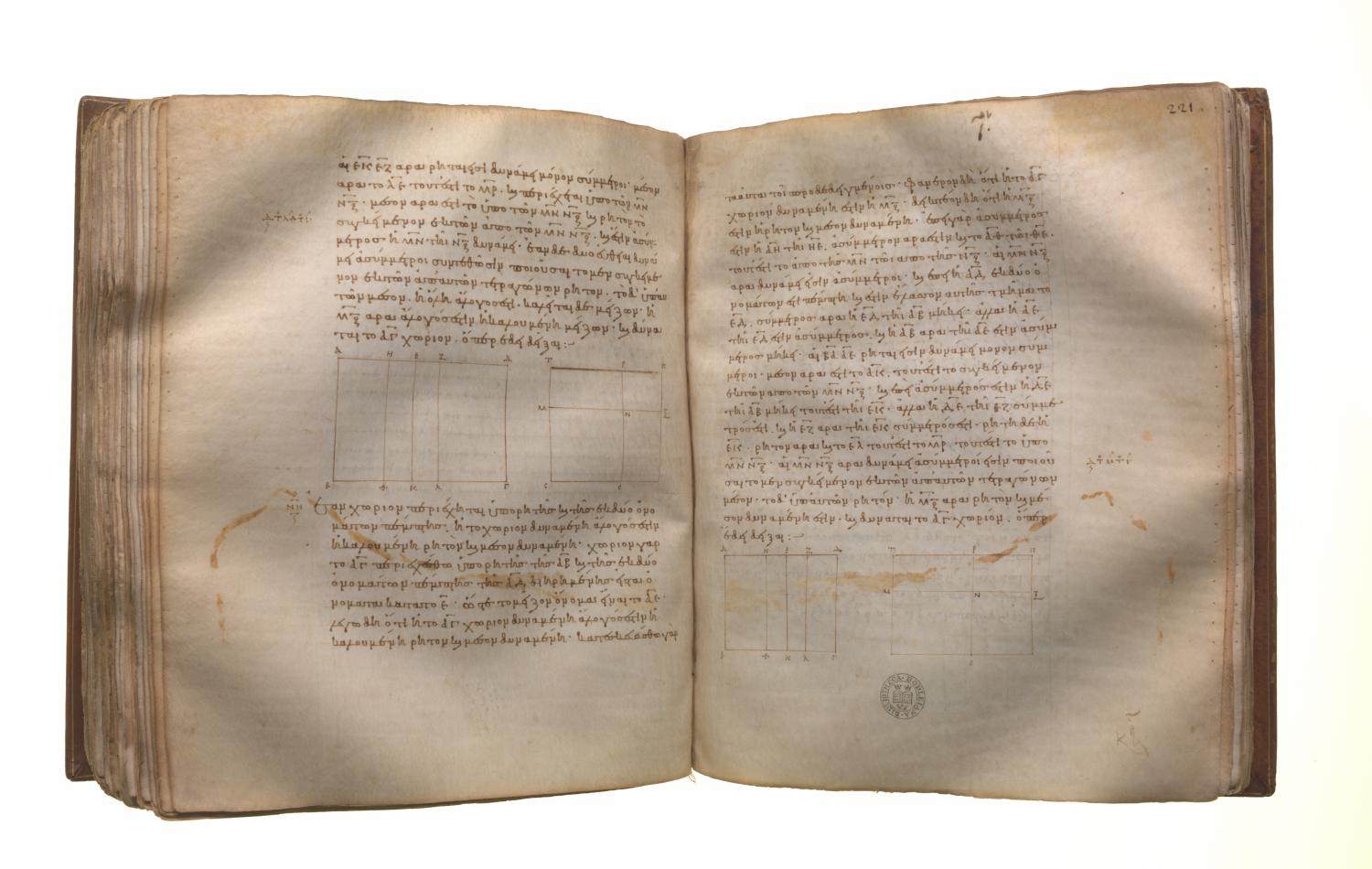Translations
If an area be contained by a rational straight line and the fifth binomial, the side of the area is the irrational straight line called the side of a rational plus a medial area. For let the area AC be contained by the rational straight line AB and the fifth binomial AD divided into its terms at E, so that AE is the greater term; I say that the side of the area AC is the irrational straight line called the side of a rational plus a medial area. For let the same construction be made as before shown; it is then manifest that MO is the side of the area AC. It is then to be proved that MO is the side of a rational plus a medial area. For, since AG is incommensurable with GE, [X. 18] therefore AH is also commensurable with HE, [VI. 1, X. 11] that is, the square on MN with the square on NO; therefore MN, NO are incommensurable in square. And, since AD is a fifth binomial straight line, and ED the lesser segment, therefore ED is commensurable in length with AB. [X. Deff. II. 5] But AE is incommensurable with ED; therefore AB is also incommensurable in length with AE. [X. 13] Therefore AK, that is, the sum of the squares on MN, NO, is medial. [X. 21] And, since DE is commensurable in length with AB, that is, with EK, while DE is commensurable with EF, therefore EF is also commensurable with EK. [X. 12] And EK is rational; therefore EL, that is, MR, that is, the rectangle MN, NO, is also rational. [X. 19] Therefore MN, NO are straight lines incommensurable in square which make the sum of the squares on them medial, but the rectangle contained by them rational.
